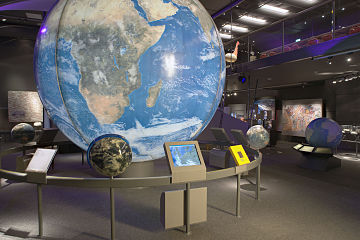AP World History: Modern 🌍
577 resourcesSee Units
Multiple Choice Practice for Globalization
Welcome to Unit 9 AP World History Multiple Choice Questions! Grab some paper and a pencil 📄 to record your answers as you go. You can see how you did on the Unit 9 Practice Questions Answers and Review sheet once you're done. Don't worry, we have tons of resources available if you get stumped 😕 on a question. And if solo study is not your thing, join a group in Rooms!
Not ready to take a quiz yet? Start studying unit 9 here: Intro to Unit 9

Image From Wikipedia
Facts about the test: The AP World History exam has 55 multiple choice questions and you will be given 55 minutes to complete the section. That means it should take you around 15 minutes to complete 15 questions.
*The following questions were not written by CollegeBoard and although they cover information outlined in the AP World History Course and Exam Description the formatting on the exam may be different.
1. Which of the following 20th century technologies directly addressed a "problem of distance?"
A. Cellular communication
B. Antibiotics
C. Vaccines
D. Nuclear power
2. Which of these world leaders liberalized their country economically?
A. Joseph Stalin
B. Mao Zedong
C. Vladimir Lenin
D. Deng Xiaoping
3. Global feminism is an example of
A. Free market reforms
B. Consumer culture
C. Rights-based discourse
D. Resistance to globalization
4. The growth of global consumer culture is most directly related to
A. Multinational corporations
B. Emergent epidemics
C. Climate change
D. Petroleum energy
5. Which of the following contributed most to the dramatic global population growth of the 20th Century?
A. Decreasing fertility, as a result of improved birth control technology
B. Decreasing mortality, as a result of vaccines and antibiotics
C. Increasing fertility, as a result of the Green Revolution
D. Increasing mortality related to global conflict
6. How did the Green Revolution change agriculture?
A. Fewer genetically modified crops
B. Fewer chemical inputs
C. More of a role for small farmers
D. More productive seeds
7. Which of the following diseases is associated with poverty?
A. Malaria
B. Alzheimer's disease
C. Heart disease
D. Influenza
8. Which of the following was an emergent epidemic disease in the 20th century?
A. Malaria
B. Cholera
C. HIV/Aids
D. Tuberculosis
9. Which of the following contributes to the risk of wildfires in the western US?
A. Air pollution
B. Climate change
C. Desertification
D. Deforestation
10. The United Nations was founded at the end of the
A. First World War
B. Second World War
C. Cold War
D. Korean War
11. Which organization was founded in order to promote international commercial exchange?
A. World Cup
B. United Nations
C. World Bank
D. World Trade Organization
12. NAFTA is an example of a(an)
A. Knowledge economy
B. Multinational corporation
C. Regional trade agreement
D. World Bank
13. Which of these is the BEST example of rights-based discourse?
A. Anti-apartheid movement
B. Cold War
C. Popular culture
D. Economic liberalism
14. Which technology plays a role in the contemporary world MOST similar to the role of the camel saddle in the medieval world?
A. World Trade Organization
B. Shipping container
C. Radio
D. Vaccination
15. Anti-globalization protests are most likely to be motivated by their support for
A. The WTO
B. Free market policies
C. Economic liberalization
D. Workers' rights
Time to check your answers on Unit 9 Practice Questions Answers and Review! 🙌
Browse Study Guides By Unit
🐎Unit 1 – The Global Tapestry, 1200-1450
🐫Unit 2 – Networks of Exchange, 1200-1450
🕌Unit 3 – Land-Based Empires, 1450-1750
🍕Unit 4 – Transoceanic Interactions, 1450-1750
✊🏽Unit 5 – Revolutions, 1750-1900
🚂Unit 6 – Consequences of Industrialization, 1750-1900
💣Unit 7 – Global Conflict, 1900-Present
🥶Unit 8 – Cold War & Decolonization, 1900-Present
✈️Unit 9 – Globalization, 1900-Present
✏️Frequently Asked Questions
🚀Thematic Guides
🗺Regional Guides
🤓Historical Thinking Skills
🧐 Multiple Choice Questions (MCQ)
📋Short Answer Questions (SAQ)
📝Long Essay Questions (LEQ)
📑Document Based Questions (DBQ)

© 2023 Fiveable Inc. All rights reserved.